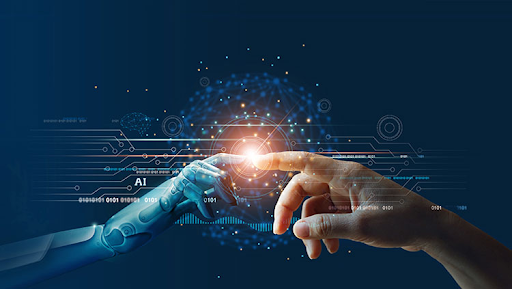
The learning rate is one of the tuning parameters when optimizing a process. It determines the step size for each iteration. The learning rate moves toward the minimum of a loss function. It is also known as "learning curve" or the learning rate. Here are some examples of how learning rate affects people. A loss function with a mean value of zero will be produced by a learning rate of 0.5. A loss function produced by a 0.1 learning rate has a mean value of 1.
The limit is set at 0.5
It is important to ask whether 0.5 is the learning rate limit. But how do you determine this limit? Although the answer is simple, the limits will vary depending upon the learning model. The resulting gradient for a learning rate of 0.5 will be small, for example. The next parameter update will then be smaller. This is a small optimization step. This avoids saddle point stagnation.

0.1 is the base rate
Meehl & Rosen chose 0.1 as the base rate for learning in their study because it was the lowest. However, this low base rate makes testing more difficult. In order to improve their efficiency in their study, they devised a test. The results of the test aren't yet confirmed but are a great first step in professional judgment. The study's low base rate is not its only problem, according to the authors.
0.1 is the maximum rate
While the default value for the learning speed is 0.1, there may be a better range for your model. This learning rate is directly proportional with the model's development. For example, a malicious client will continue to demonstrate abnormal deviations even if it is updated at a learning rate of 0.001. If your model is not performing as expected, you should change this value to 0. However, this value can be problematic when your model starts to learn too fast.
1/t decay
Step decay refers to a statistically significant decrease in the learning rate over several epochs. This reduces the likelihood of oscillations, which occur when the learning rate is kept constant. In other words, if learning is too fast, learning can jump backwards and forth over a set value. This hyperparameter can also be adjusted to minimize errors. Typical values are 0.2, 0.3, and 0.4. While these values can be used as heuristics in some cases, the more popular values are preferable.

Exponential decay
The difference in exponential decay and time-based degradation in recurrent neurons networks is that they have a smoother and more consistent behavior. Both learning rates decrease with time. However, exponential decay is more rapid during initial training, and then flattens out towards the end. There are two types of decay: time-based decay or exponential decay. Exponential decay is slightly faster than time-based but still outperforms it.
FAQ
Where did AI come from?
Artificial intelligence was established in 1950 when Alan Turing proposed a test for intelligent computers. He stated that a machine should be able to fool an individual into believing it is talking with another person.
The idea was later taken up by John McCarthy, who wrote an essay called "Can Machines Think?" In 1956, McCarthy wrote an essay titled "Can Machines Think?" He described the difficulties faced by AI researchers and offered some solutions.
AI is good or bad?
Both positive and negative aspects of AI can be seen. The positive side is that AI makes it possible to complete tasks faster than ever. It is no longer necessary to spend hours creating programs that do tasks like word processing or spreadsheets. Instead, instead we ask our computers how to do these tasks.
On the negative side, people fear that AI will replace humans. Many people believe that robots will become more intelligent than their creators. This could lead to robots taking over jobs.
Is Alexa an Artificial Intelligence?
The answer is yes. But not quite yet.
Amazon created Alexa, a cloud based voice service. It allows users use their voice to interact directly with devices.
First, the Echo smart speaker released Alexa technology. Other companies have since used similar technologies to create their own versions.
These include Google Home, Apple Siri and Microsoft Cortana.
Statistics
- While all of it is still what seems like a far way off, the future of this technology presents a Catch-22, able to solve the world's problems and likely to power all the A.I. systems on earth, but also incredibly dangerous in the wrong hands. (forbes.com)
- In 2019, AI adoption among large companies increased by 47% compared to 2018, according to the latest Artificial IntelligenceIndex report. (marsner.com)
- In the first half of 2017, the company discovered and banned 300,000 terrorist-linked accounts, 95 percent of which were found by non-human, artificially intelligent machines. (builtin.com)
- More than 70 percent of users claim they book trips on their phones, review travel tips, and research local landmarks and restaurants. (builtin.com)
- By using BrainBox AI, commercial buildings can reduce total energy costs by 25% and improves occupant comfort by 60%. (analyticsinsight.net)
External Links
How To
How do I start using AI?
One way to use artificial intelligence is by creating an algorithm that learns from its mistakes. You can then use this learning to improve on future decisions.
If you want to add a feature where it suggests words that will complete a sentence, this could be done, for instance, when you write a text message. It could learn from previous messages and suggest phrases similar to yours for you.
The system would need to be trained first to ensure it understands what you mean when it asks you to write.
To answer your questions, you can even create a chatbot. For example, you might ask, "what time does my flight leave?" The bot will reply that "the next one leaves around 8 am."
Take a look at this guide to learn how to start machine learning.